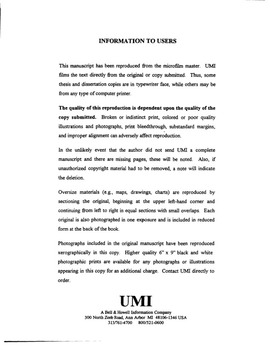| dc.contributor.advisor | Henry, Richard C., | en_US |
| dc.contributor.author | Howard, Joseph William. | en_US |
| dc.date.accessioned | 2013-08-16T12:30:09Z | |
| dc.date.available | 2013-08-16T12:30:09Z | |
| dc.date.issued | 1998 | en_US |
| dc.identifier.uri | https://hdl.handle.net/11244/5684 | |
| dc.description.abstract | Near-infrared Virgo cluster spiral colors. Near-infrared (NIR) surface photometry in J (1.2$\mu$m), H (1.6$\mu$m) and K (2.2$\mu$m) have been obtained for a sample of Virgo cluster spirals; NGC4321, NGC4303, NGC4571, NGC4689, and NGC4254 which span a large range in HI deficiency. The spirals range from a normal gas content to a deficiency of a factor of 10 compared to normal galaxies. Using previous HII region abundance studies along with the NIR colors an attempt has been made to calibrate any correlation between the J-K index to the overall gas phase abundance gradients as a first step to probing the underlying stellar metallicity. Decomposition techniques have been used to produce estimates of spiral bulge/disk masses and luminosities in all three J, H, & K bands, as well as to explore the variation of mass-to-light ratios within the separate galaxy components. An analysis of the NIR colors is performed in an attempt to unravel the similar effects that stellar ages, dust content, metallicity, and some non-stellar emission processes has upon colors. The derived color gradients for the J-K index are very shallow and show a range of behaviors across the galaxy sample. | en_US |
| dc.description.abstract | Halo planetary nebulae. Using published spectral line data for nine halo planetary nebulae (HPNe), I have calculated photoionization models in an attempt to gain insight into the physical conditions and chemical abundances of these nebulae. The nine HPNE reported upon are K648, DdDm-1, NGC2242, NGC4361, PN243.8-37.1, PN006-41.9, M2-29, BB-1, and H4-1. The derived abundance ranges for the HPNe are: C 6.60-8.95, N 7.18-8.00, O 7.56-8.56, Ne 6.24-7.71, Ar 4.12-7.70, and S 4.90-7.00 (log(x) + 12). The temperature range for the central stars of these nebulae is 40,000 to 140,000K. Specifically, with a few exceptions, I find that all nine objects exhibit subsolar O/H; most show enhanced C/O and N/O, and a constant Ne/O ration. I also note the existence of comparatively larger abundance scatter in the HPNe as opposed to disk PNe, and suggest that this is consistent with the accretion model of halo formation formulated by Searle & Zinn. In addition, I test the effects on derived abundances and central star temperatures of a variety of model atmospheres as well as blackbodies for input ionizing spectra. I find that nebular line strengths are relatively insensitive to atmospheric details; thus blackbody spectra are suitable for central star continua. | en_US |
| dc.format.extent | xiv, 158 leaves : | en_US |
| dc.subject | Spiral galaxies. | en_US |
| dc.subject | Planetary nebulae. | en_US |
| dc.subject | Cosmic abundances. | en_US |
| dc.subject | Physics, Astronomy and Astrophysics. | en_US |
| dc.title | Prospecting for elements: Galactic halo planetary nebulae abundances and Virgo spiral galaxy color profiles. | en_US |
| dc.type | Thesis | en_US |
| dc.thesis.degree | Ph.D. | en_US |
| dc.thesis.degreeDiscipline | Homer L. Dodge Department of Physics and Astronomy | en_US |
| dc.note | Source: Dissertation Abstracts International, Volume: 59-07, Section: B, page: 3493. | en_US |
| dc.note | Adviser: Richard C. Henry. | en_US |
| ou.identifier | (UMI)AAI9839818 | en_US |
| ou.group | College of Arts and Sciences::Homer L. Dodge Department of Physics and Astronomy | |
